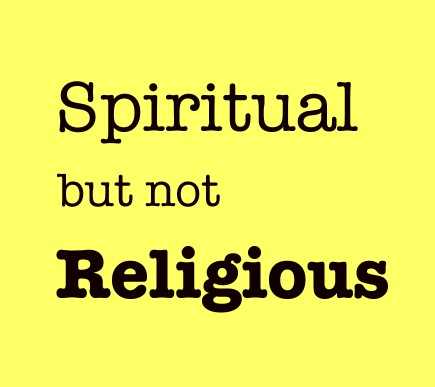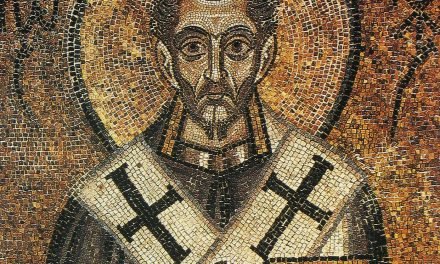I’ve been teaching for almost a decade, and in past years, if there’s been anything I’ve been more annoyed with (in a gentle, mild, non-violent way) in class, it’s been when my students try to wriggle out of difficult discussions about faith and being Catholic by saying, ‘Well, I’m spiritual but not religious.” It’s a famous phrase – one that even New Atheist Sam Harris extols, suggested that it is possible to achieve the benefits of meditation and spiritual encounters without believing in God.
It’s often seemed an arrogant kind of statement, perhaps along the lines of what Lillian Daniel, a UCC pastor, wrote very defensively (and yes, arrogantly) about in this infamous 2011 post at The Christian Century. As she puts it:
I had heard it many times before—so many times I could have supplied the details. Let me guess, you read the New York Times every Sunday, cover to cover, and you get more out of that than the sermon? Let me guess, you find God in nature? And especially in sunsets?
As if the people who attend church had never encountered all those psalms that praise God for the beauty of natural creation, and as if we never left the church building ourselves. God in nature? Really? The theme can be found throughout the Bible. When you push on this self-developed spirituality, you don’t find much. God is in the sunset? Great, I find God there too. But how about seeing God in cancer? Cancer is nature too. Do you worship that as well?
The phrase has often seemed a cop out. It’s seemed to overly dichotomize something students imagine is “religion” and something students imagine is “spirituality” without recognizing that it’s very difficult, if not impossible or unintelligible, to separate the two.
I’ve been changing my mind on this, at least a little. One of the reasons is because, if I’m really honest with myself, being spiritual but not religious was a “belief” I held too, in my mid-twenties – and my rejection of it is in part what led to going away to seminary and graduate school in theology. Some of my concern is maybe a “convert’s” zeal against what they have rejected, or believe they have rejected.
I still think some of the major critiques hold true. But a new book by Linda Mercadante called Belief Without Borders: Inside the Minds of the Spiritual But Not Religious (Oxford, 2014) also highlights some important reasons to take spiritual-but-not-religious (SBNR) seriously.
Mercadante (herself once SBNR) also notes many points where SBNR may be, in fact, exactly what theologians and pastors decry, for they tend to make the following kinds of statements:
“everyone should and does have the freedom to decide one’s own beliefs and spiritual practices…”
“theological positions and views they identified with the Western religious heritage.”
all religions as being “the same at their core”
that SBNR had a vaulted vantage point from which to understand “the essence of true spirituality” (ch 4)
Mercadante has great sympathy for her subjects, but is not afraid to critique these statements and raise concerns about them, for example in the ways that she thinks SBNR derives from a version of social libertarianism that she thinks may raise some problems because of exclusive foci on “individual rights, personal responsibility, self-determination, and freedom, all core American values.” (236) And:
As for finding the truth within, it is unrealistic to assume you can strip away external influences, culture, and socialization, and get inside to the sacred core. You may drink from many wells but you are not creating the water – and you still need water.
Yet Mercadante also articulates some important reasons why we theologians ought to take SBNR far more seriously than often happens.
One of the key reasons is that, in fact, SBNR and committed faithful members of religious traditions are probably not so far apart in some of their reasons for being part of one group or the other. Mercadante observes, for example:
The ‘spiritual but not religious’ movement may not be simply a protest against religion but also a protest against a secular world that brackets the spirit or forces an overreliance on science to answer all problems. (p. 34, emphasis mine)




